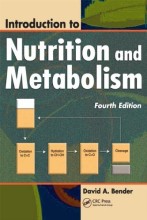NP9 Amino acid catabolism
14 important questions on NP9 Amino acid catabolism
How is protein divided through the body? And what goes in and what goes out?
- 80 g in
- 70 g from mucus
- 10 g faecal loss
- 70 g urine
- ±10 kg body protein
What is the difference between essential and non-essential amino acids?
- Essential amino acids
- those that cannot be synthesised in the bo
dy
- but must be provided in the diet to maintain N balance
- Non-essential amino acids
- those that can be synthesised in the body
- from (common) metabolic intermediates
- and therefore can be synthesised (by transamination)
- as long as there is adequate total fixed N
The C and N part of amino acids follow separate pathways in catabolism, which ones
- C is channeled in gluconeogenesis or TCA cycle
- N is channeled in urea cycle
- Higher grades + faster learning
- Never study anything twice
- 100% sure, 100% understanding
What is oxidative deamination of amino acids?
(NADH and NH4+ will come free)
happens in the mitochondria [so 2.5 AT]
What do these (oxidative de-amination and transamination) processes have in common, what is the difference?
Transamination of amino acids to common intermediates
- alanine
- aspartic acid
- glutamic acid
- glycine
- alanine --- pyruvate
- aspartic acid --- oxaloacet
ate
- glutamic acid --- alfa-ketoglutarate
- glycine --- glyoxalate
How does the threonine catabolism goes
- conversion into alfa-ketobutyrate, which is converted into propionyl-CoA and subsequently into succinyl-CoA
*OR: converted to Glycine --> Serine --> Pyruvate
How does the excretion of nitrogenous waste goes
- then urea is the common product; it is readily soluble
- ureotelic animals
if water balance is a problem (e.g. Little water is available in the egg)
- then uric acid is a common product
- it has low solubility and crystallises reality
- birds and most insects are uricotelic: they excrete uric acid
Urea synthesis - a cyclic biosynthetic pathway =
What is the energy content of urea?
Urea synthesis requires 2 ATP/N
Urea is correction going form DE to ME
What is the energy content of urea?
Urea synthesis requires 2 ATP/N
Urea is correction going form DE to ME
How much ATP yield is alanine?
TCA = +10 ATP
Ox deamination = +2.5 ATP
Urea = -2 ATP
T
How many gram glucose can be formed from:
- 100 gram glycogen (MW n*162)
- 100 gram Tri-palmitate (MW 806)
- 100 gram casein
- 100 gram glycogen (MW n*162)
- MW ± 10% loss --> 110% = 110 gram
- 100 gram Tri-palmitate (MW 806)
- C16 fatty acid --> glucose? NO
- but glycerol can; ± 10-11 gram glucose produced
- 100 gram casein
- 100/137 = 0.73 mol
- 0.73/2 = 0.36 mol glucose
- 0.36 mol glucose = 0.36*180 = 66 gram glucose
The ME (kJ/gram) that can be obtained from muscle protein in the body is:
- 23.6 kJ/g
- 18.4 kJ/g
- 17.0 kJ/g
- 5.2 kJ/g
What is the meaning of the other values?
- 23.6 kJ/g --> GE
- 18.4 kJ/g --> ME (body protein)
- 17.0 kJ/g --> ME dietary proteins
- 5.2 kJ/g --> urea loss via urine
1.4 is loss with absorption and uptake etc.
The question on the page originate from the summary of the following study material:
- A unique study and practice tool
- Never study anything twice again
- Get the grades you hope for
- 100% sure, 100% understanding
































